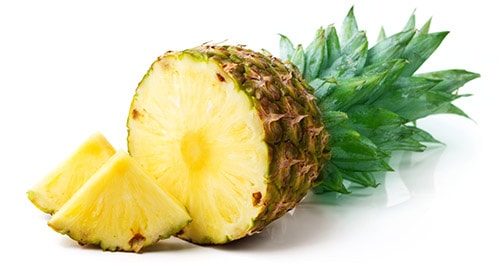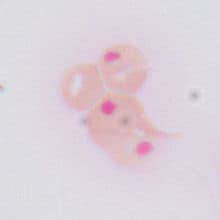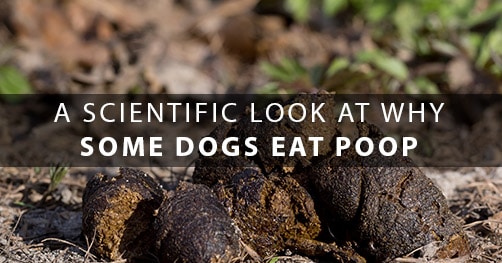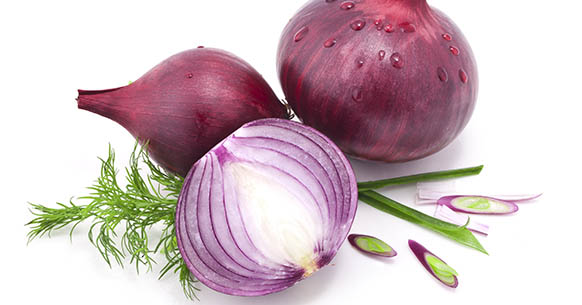Why Do Dogs Eat Poop? A Look at Coprophagia
I love my dog. She cracks me up. She will do the funniest things. She digs when I am gardening; I think she wants to help! She even has brought me a dead animal as a present. But when I saw her eating poop, I was disgusted! Why, why, why? I didn’t understand. Why would my “best friend” do something so repulsive? We would like to think of our pets as humans, but dogs will be dogs and will continue to exhibit dog behavior, no matter how domesticated they are. Why would any animal eat feces? Dogs are misunderstood on so many levels. In fact, in the town where I live, working ranch dogs have been shot for eating poop. This poop-eating behavior is actually very common in the animal kingdom. There are many reasons why dogs or other animals eat a piece or two of poo. Let’s take a look at why.
The act of eating poop is so common that there is an actual word for it: coprophagia. For example, the dung beetle’s primary nutritional source is feces. Elephants, giant pandas, guinea pigs, and hippos are a few other species that consume this treat from time to time. Surprisingly, poop can offer a good source of nutrients. Rabbit poop is rich in enzymatic nutrients and vitamin B. An animal lacking certain digestive enzymes can have an urgent need to engage in coprophagia, especially if it has pancreatic insufficiencies. Malnutrition from a poor diet leaves a dog hungry and searching for proper nutrients. Surgeries involving the gut with the removal of intestines can lead to a lack of nutrients being absorbed, which can cause malabsorption and coprophagia.
Poop-eating behavior also has evolved as a protective mechanism, ensuring the pack’s survival. A designated pack member will hide the scent of a weak or sick animal by eating its excrement, eliminating any smells of weakness. Predators seek out easy prey such as the young. A lactating mother and her newborn pups are prime targets. Milk by-products in the puppies’ feces are a powerful and attractive smell to predators. Dogs eat poop as a means of keeping their newborns safe and clean.
A bitch instinctively will clean her pups during the birthing process. She eats the remnants of birth and will lick the newborn’s anus to stimulate the bowel process. This keeps the den free from disease. This process will go on for four to five weeks after birth. In some cases, a brood bitch (a female dog kept for breeding purposes) will continue this process throughout her life, regardless of how old the puppies are. Some females will ritualize this habit whether there are puppies or not.
Some dogs love to eat the little delicacy known as kitty roca. Cat poop in the litter box is extremely dangerous to dogs. Manufacturers say it is nontoxic for cats, but they don’t put a warning label on the box about consumption by dogs. Herein lies the problem: the cat litter molecules (or clay) are absorbent, soaking up water. When the kitty roca is swallowed, the dog’s intestines, mostly liquid, will combine with the cat litter to form a cement-like substance. The hard blob subsequently will stop any normal passage of feces, blocking the flow of digestion. This bad case of constipation wreaks havoc on a dog. Your dog can suffer many gastrointestinal symptoms such as gastric pain, belly bloating, nausea, vomiting, and more. If your dog eats enough kitty roca, its intestines can rupture due to the swelling.
Keep in mind that your dog can become ill from eating poop because it can carry parasites such as giardia and Coccidia. If it sits around for a few weeks, roundworm and whipworm have been known to populate poop. Herbivore feces from deer, goats, rabbits, and so on cannot transmit parasites to carnivores such as dogs, bears, and wolves. Interestingly, parasites are specific to the host they are carried in. Therefore, carnivores can be infected only by eating other carnivores’ poop! It’s a vicious cycle: the dog eats poop infected with parasites; the parasites gobble up the nutrients for fuel, leaving the dog hungry; and then the dog looks for more food, only to eat poop again. Getting your dog tested yearly for parasites can be a lifesaver.
Dogs eating poop may have developed as part of their evolution or for nutritional purposes; in addition, there are behavioral reasons. Allelomimetic behavior is the act of doing the same as others—basically copying a behavior. Some dogs might copy this eating habit, thinking it’s a good thing to do. Submissive dogs will eat the poop of a more dominant dog. This occurs when there are multiple dogs living in the same house. A stressed, nervous, or anxious dog will be driven to unwanted, odd behaviors. You’ll see this behavior in dogs that are confined to a kennel or chained up. They might indulge in excrement if they are bored, lonely, or neglected. If your dog is young, it might be exploring its world. Some dogs like the taste, which is very comparable to their warm, moist food as pups.
Dogs love things that taste and smell terrible to us. You might say some dogs have a sort of “refined taste.” We may not understand why dogs want to eat poo, but they do.

Just a side note: if you have a dog that eats its own poop, you can try feeding it pineapple. Half a chunk or one teaspoon will suffice. Pineapple contains the digestive enzyme bromelain. This chemical acts as a meat tenderizer. Some dogs have been known to be put off by the taste of pineapple in their own poop. It tastes good when it goes in but bad after it comes out!
References:
http://healthypets.mercola.com/sites/healthypets/archive/2013/08/23/coprophagia-poop-eating.aspx
https://en.wikipedia.org/wiki/Coprophagia
http://www.peteducation.com/article.cfm?c=2+2085&aid=155
Is onion bad for dogs?
We all feed our dog table scraps and human treats and we know we shouldn’t. It’s so hard to resist that lovable face pleading for you to share your goodies. Most pet owners know of the harms of chocolate, but many other foods can cause harm to one’s precious pooch. There is growing concern in the dog community about which foods are harmful, and how much damage a given food can cause. After talking to my friends about what foods are bad for dogs, we all came to the same realization – that we didn’t know how bad onions are for our dogs. This article primarily looks at The Not-So-Innocent Onion and other members of the Allium family. After reading this article, I hope you will have a better understanding of how badly these little delights affect our dogs.
Now you’re thinking, why would my dog eat onions? The answer is, dogs will take anything you give to them as long as it smells good and taste good…. to them. He will sneak a piece of yummy pizza. Might be attracted to that potato salad or dip sitting on the picnic blanket. The smell of a hamburger can be irresistible. You might leave the remains of a bowl with leftover stew for your buddy to lick clean. And the draw to dig up the leeks in the vegetable garden can be overwhelming for some. There are many reasons why a dog will consume this little devil. Chives, shallots, green onions, onions, leeks, and garlic are all included in the Allium family.
It’s hard to tell what a pooch has gotten into. They can’t talk and probably won’t want to tell you what they have gotten into anyway. They’re dogs; they like that kind of stuff! Their symptoms might simply be a sour stomach causing vomiting after eating sticks and grass! Needless to say, if your dog is showing any of these signs and symptoms, take him to the vet as soon as possible. I know these are general symptoms your dog may display, but it’s best to err on the side of caution and not risk severe illness or death.
Just as with humans, onions can cause a multitude of problems in animals. Gas and bloating are our least worries. Dogs’ symptoms can range from a mild reaction such as an upset stomach, to more severe reactions such as liver toxicity or death. Surprisingly, it really doesn’t matter if your dog ingests raw or cooked onions; even dehydrated or powdered onions such as in soup mixes can cause harm. It all depends on how sensitive your dog is to the Allium family.
Similar to human allergic reaction with eating peanuts, some dogs can have more sensitivity than others. A general rule is a dog that ingests 5-15 grams / kilogram is at risk for a toxic reaction; it’s less for cats. Basically, that is 0.5% of their body weight which can be the tiniest diced portion known to man. Garlic is 5 times more powerful than onions, so Fido would need less to initiate a reaction. A mild reaction can go unnoticed, with only a few red blood cells being lysed (damaged). A moderate reaction might leave a dog lightheaded or lethargic, which might easily go unnoticed by the owner. But with a severe reaction, your dog can show signs and symptoms of vomiting, diarrhea, heavy panting, and jaundice (yellow coloring to the gums and eyes). The jaundice occurs due to liver damage and may take several days to develop. The cause of all the trouble is found in the onion flesh called Thiosulfate. Once the onion is eaten, thiosulfate breaks down to organosulfur in the GI tract. Your precious pooch does not have the enzymes to digest this compound.
Now organosulfur reaches the red blood cells and oxidizes hemoglobin component. As we all know from school, the hemoglobin molecule carries much needed oxygen to every cell. Once oxidized, clumping exists and makes oxygen molecules unable to transfer across to vital cells. Under a microscope, this looks like tiny purple clumps…. the tell tale sign of onion toxicity. This is the most severe reaction: Heinz Body Anemia.

(Normal red blood cell)

(Heinz Body Anemia, 3 distinct clumps)
You can diagnose this by looking at his gums and mucous membranes. No oxygen, no color! The gums will instead be pale. The dog will also have dark or reddish brown colored urine due to the elimination of these damaged red blood cells, and a rapid heart beat due to increased demand for oxygen to starved cells. Sudden onset of weakness, fatigue, and lack of interest in food can follow.
Deb LaPaugh, of La Paw Animal Hospital (yes, that’s her name! Fitting for a veterinarian) is concerned about an animal that looks jaundiced, shows signs of weakness, and is peeing blood. She mentions if a dog comes into the vet with these symptoms, the usual course of action will be blood work and a physical examination. A CBC (complete blood count) can reveal the severity of any loss of hemoglobin and a blood smear to show the clumped red blood cell. The dog would be placed on supportive care such as giving IV fluids and keeping the dog over night in the hospital for observation. From here the vet can determine if more drastic measures need to be taken.
Early stages of onion toxicity can be treated easily with supportive care and detoxification such as special vitamin C mixture to help counteract the poison. The later stages would include additional treatment such as supplemental oxygen and blood transfusions. The dog would then be monitored for several more days. Deb LaPaugh states she has seen cases where the dog has stayed hospitalized for over one month.
Onions can have costly consequences, but your furry friend will most likely recover from his misfortune. Next time reconsider feeding your dog extra goodies form the table. I would rather have a skinny healthy dog than a fat sick one. In the future we will look at other foods that might cause a potential reaction.
References:
1 gm = 0.06 teaspoons
1 lb = 0.45 kilograms
http://en.wikipedia.org/wiki/Red_blood_cell
http://en.wikipedia.org/wiki/Heinz_body
Deb LaPaugh, VMD. La Paw Animal Hospital, Bend Oregon. 4-18-15


